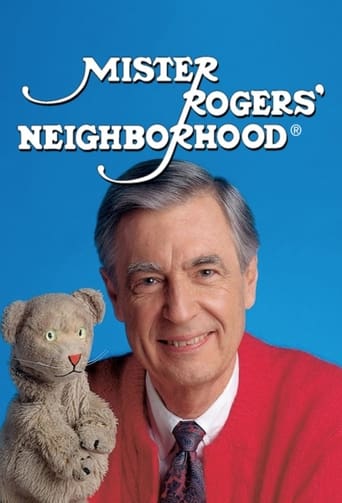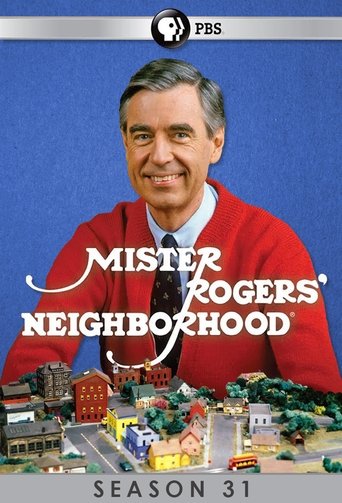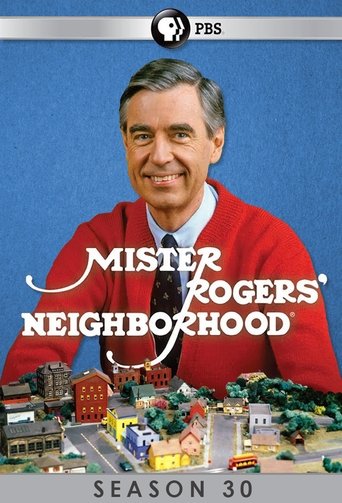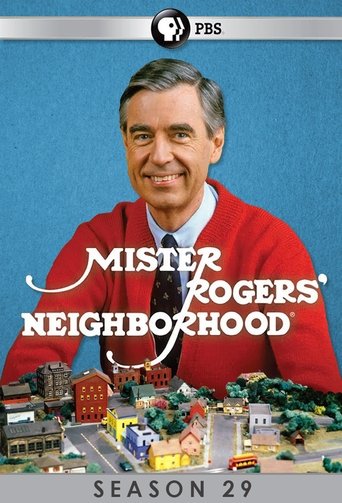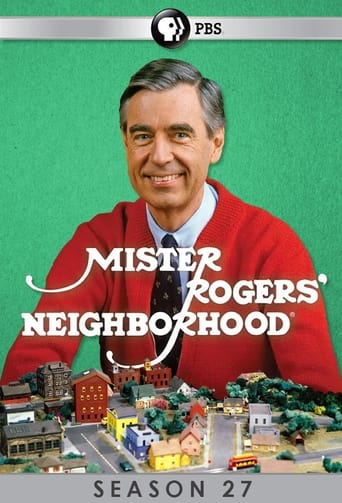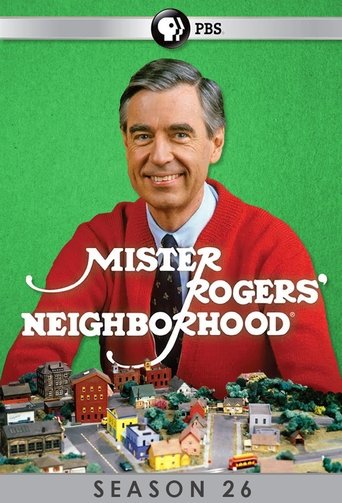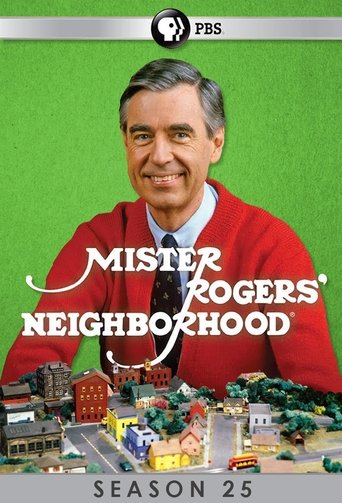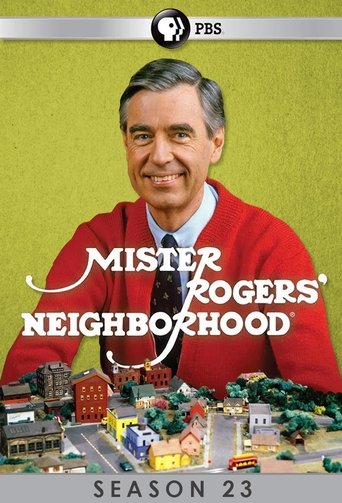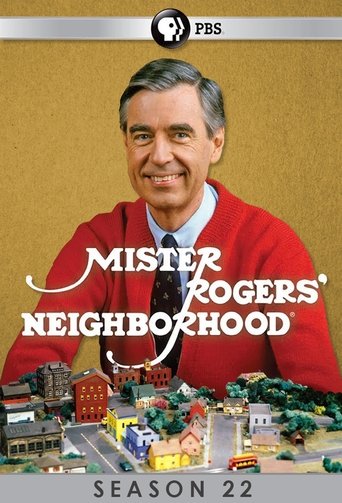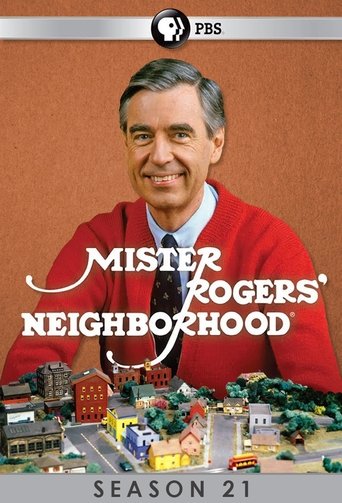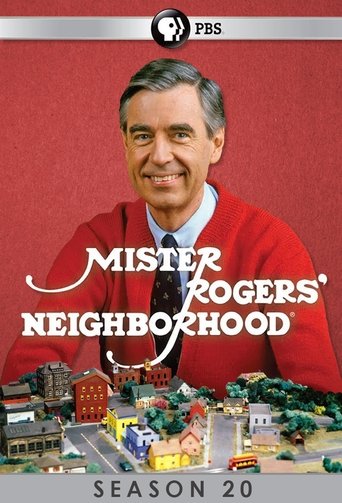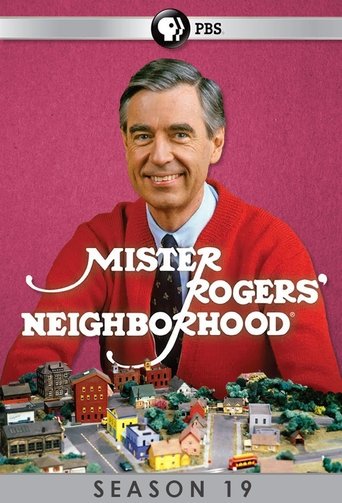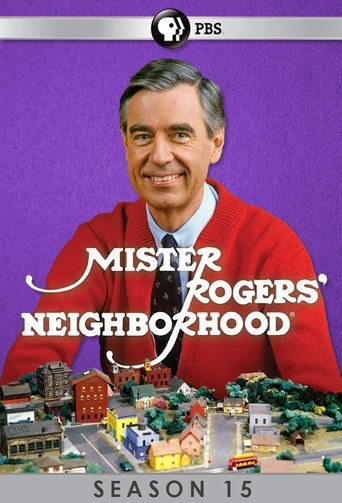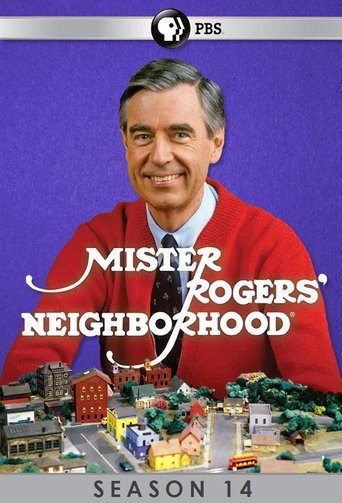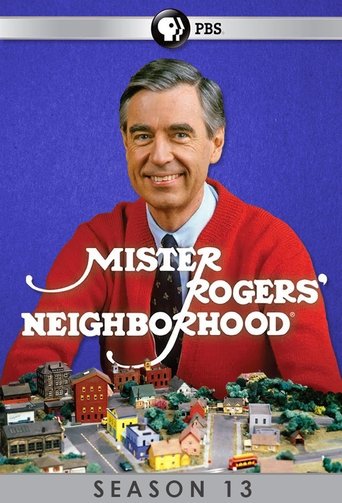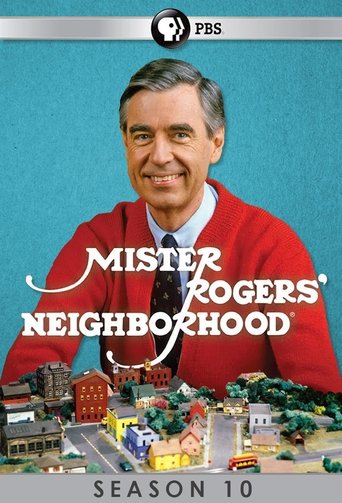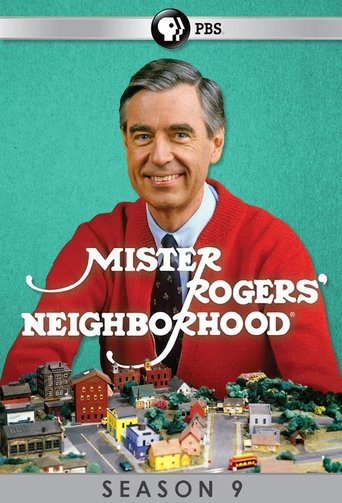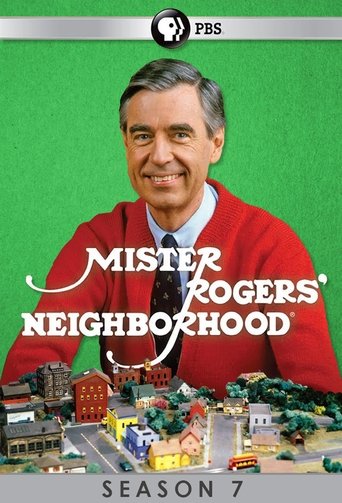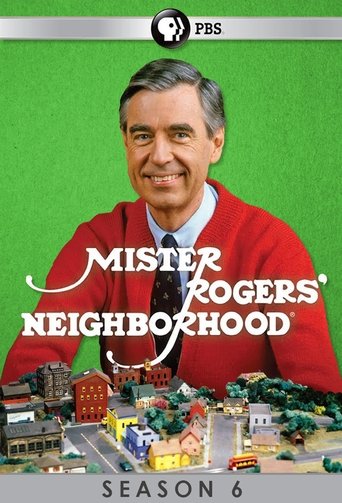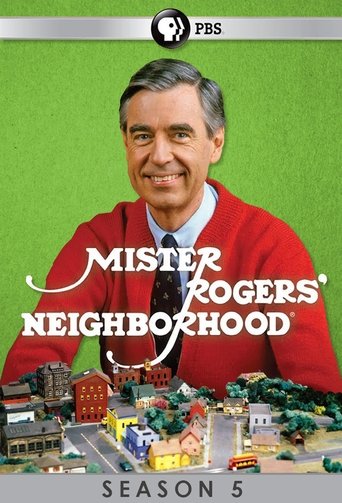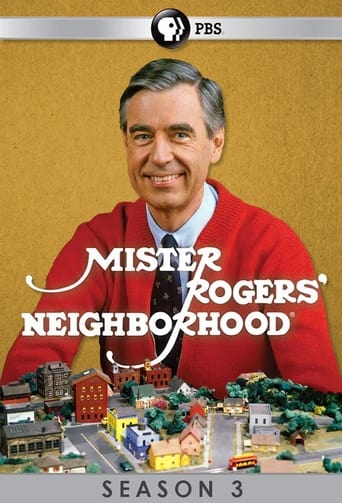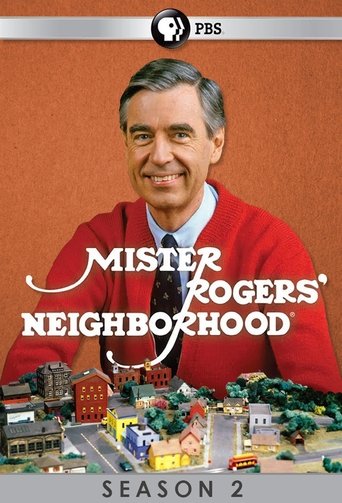Mister Rogers' Neighborhood Season 14
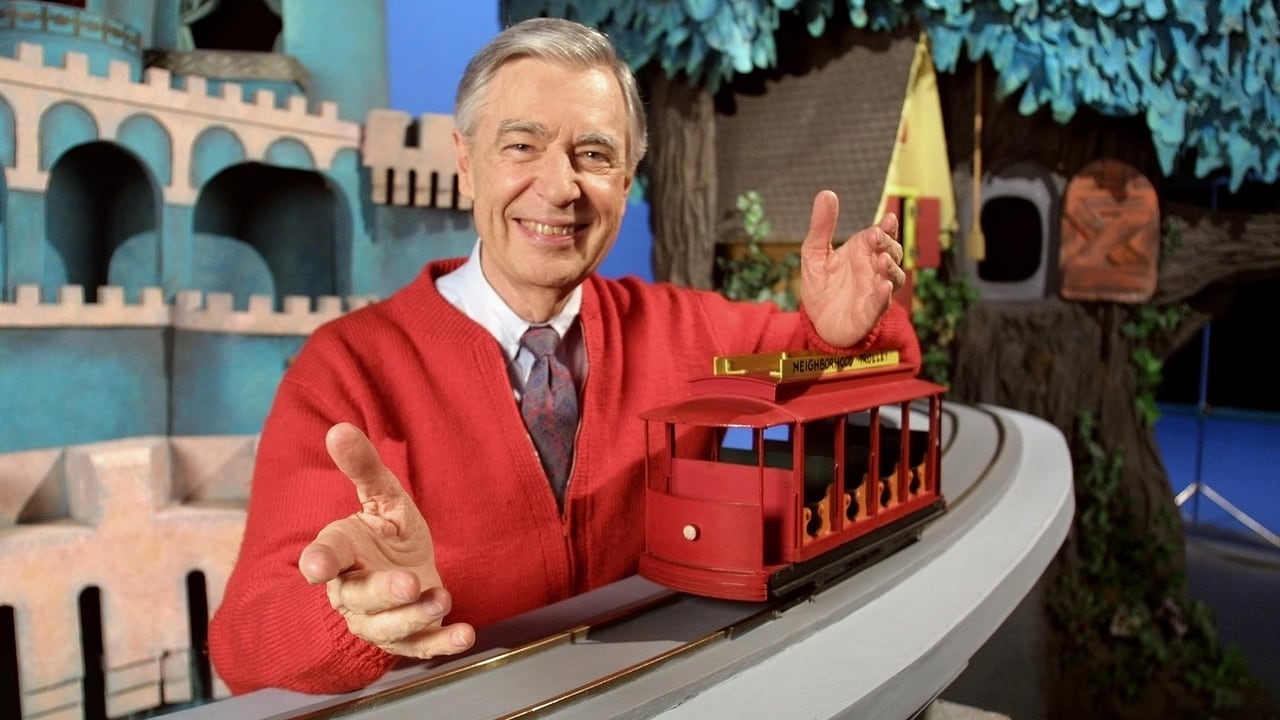
Mister Rogers' Neighborhood is an American children's television series that was created and hosted by namesake Fred Rogers. The series originated in 1963 as Misterogers on CBC Television, and was later debuted in 1966 as Misterogers' Neighborhood on the regional Eastern Educational Network, followed by its US network debut on February 19, 1968, and it aired on NET and its successor, PBS, until August 31, 2001. The series is aimed primarily at preschool ages 2 to 5, but has been stated by PBS as "appropriate for all ages". Mister Rogers' Neighborhood was produced by Pittsburgh, Pennsylvania, USA public broadcaster WQED and Rogers' non-profit production company Family Communications, Inc.; previously known as Small World Enterprises prior to 1971, the company was renamed The Fred Rogers Company after Rogers' death.
Watch NowWith 30 Day Free Trial!
Mister Rogers' Neighborhood
1968 / TV-Y

Mister Rogers' Neighborhood is an American children's television series that was created and hosted by namesake Fred Rogers. The series originated in 1963 as Misterogers on CBC Television, and was later debuted in 1966 as Misterogers' Neighborhood on the regional Eastern Educational Network, followed by its US network debut on February 19, 1968, and it aired on NET and its successor, PBS, until August 31, 2001. The series is aimed primarily at preschool ages 2 to 5, but has been stated by PBS as "appropriate for all ages". Mister Rogers' Neighborhood was produced by Pittsburgh, Pennsylvania, USA public broadcaster WQED and Rogers' non-profit production company Family Communications, Inc.; previously known as Small World Enterprises prior to 1971, the company was renamed The Fred Rogers Company after Rogers' death.
Watch Trailer
With 30 Day Free Trial!
Mister Rogers' Neighborhood Season 14 Full Episode Guide
Was duplicate. Delete.
Mister Rogers does not change into his sweater and sneakers as usual. Instead, he sings a slightly different version of Won't You Be My Neighbor as he enters: "...a beautiful day for an opera. Would you like one? I know I'd like one..." He promptly introduces the newest Neighborhood opera: A Granddad for Daniel. The opera opens as Grandparents' Day is underway and Daniel Mefford (played by Daniel Striped Tiger) talks with his parents about his grandfather. Daniel's father, Charles Mefford (Neighbor Aber), shows him a picture of his grandfather and reminds Daniel that his grandfather left long ago. Both Daniel's father and mother leave for the jungle -- Daniel's father, a professional polisher, on foot, and his mother (Lady Aberlin), a trolley conductor, with a few passengers on her trolley. Along with Daniel, Mrs. Mefford's passengers include a straw salesman who has traveled the world.
Mister Rogers arrives with a handheld cassette recorder which he demonstrates by recording himself and playing it back. He plays another tape recording of various grandparents who tell what their grandchildren call them and also shares a few photographs of his own grandparents.
Mister Rogers mentions that he has been thinking about an old car that his grandparents had when he was younger. Showing a picture of the car that he brought with him, Mister Rogers shares a video to remember a time when he drove a similar car. He also mentions that his grandparents often read to him which he believes is the reason he enjoys books so much. Mister Rogers then looks at a picture book about tools before singing Did You Know.
Mister Rogers arrives with a partially completed homemade wind chime made of straws, strings, and bells. He shows how it is made and by adding one more bell, he completes the chime. At Negri's Music Shop, Mister Rogers meets John Blake who is visiting the shop with his son Johnathan. Accompanied by Johnny Costa, Carl McVicker, and Joe Negri, Mr. Blake plays a number on his violin. Johnathan demonstrates his own violin and then joins the others as they play Many Ways to Say I Love You. Returning to the house, Mister Rogers shares a few photographs of himself and his parents from when he was a little boy.
Rogers takes the model Neighborhood Trolley to the Pennsylvania Trolley Museum in Washington, PA filled with real trolleys. He rides one of the restored trollies (Philadelphia Rapid Transit Company #5326) in one direction and drives it back in the other direction. After returning to the television house, Rogers shows the controls of how he operates the Trolley. In the Neighborhood of Make-Believe, the Trolley and everyone else is surprised with a French trolley called "Grandparents' Express." It has a message for Grand-père that his granddaughter Colette is visiting.
Mister Rogers opens by talking about how his job is to make television programs for children. As the camera pans out, viewers are treated to a glimpse of the studio where Mister Rogers' Neighborhood is filmed. After briefly introducing Johnny Costa, Bobby Rawsthorne, and Carl McVicker, Mister Rogers returns to his television home and talks about writing music. He then sings It's You I Like and spends some time thinking about the kind of work that children do. Opening a case he brought with him, Mister Rogers shows several of the Neighborhood of Make-Believe puppets before Mr. McFeely stops by with a set of pictures. The pictures show many of the sets and puppets that Fred Rogers had used throughout his career.
Mister Rogers arrives with an apple which he says was given to him by Betty Aberlin on his way in. Putting the apple in the refirgerator, Mister Rogers is reminded of his shopping list and invites viewers along as he visits the Neighborhood grocery store. As Mister Rogers is arriving at the grocery store, he is greeted by Chef Brockett who is riding by on a bicycle. Inside the store, Mister Rogers buys his groceries and is treated to a tour of the stock room by Wayne and Joel Wagner.
Mister Rogers arrives with a bucket and a rubber washer. Taking the washer to the kitchen, he finds that it is too large to be used to repair his kitchen faucet. After a phone call to Bob Trow, Mister Rogers visits Trow's workshop to pick up a washer that fits. At Trow's workshop, Bob Trow is repairing a shovel with a broken handle. Once that task is completed, Mister Rogers is shown a collection of various washers and is able to find one just the right size. Mr. Trow then demonstrates an antique water pump he has recently repaired.
Mister Rogers arrives with a piece of string that came on a package. Using the loop, Mister Rogers shows a few games and tricks that can be played with such a string and then sings Did You Know. After a phone call from Jane Henshaw, Mister Rogers visits her at the Neighborhood dairy farm where he learns about cows. He also sees how cows are milked and how the milk is bottled.
Mister Rogers arrives with a letter he received from Mr. William Bolger, the Postmaster General of the United States. Showing the postage stamps, Mister Rogers explains that it costs money to send mail and invites viewers along as he visits Mr. Bolger to see how stamps are made. At Mr. Bolger's office, Mister Rogers talks to him about being the Postmaster General and his interest in the postal service. Mister Rogers is then introduced to Gordon Morison and Clarence Holbert who show him how stamps are made. Mr. Holbert shows how they are designed and Mr. Morison shows how they are printed.
Mister Rogers arrives with a record player which he demonstrates in the kitchen. The record he plays is a 45 RPM recording of Everybody's Fancy. He then shows a film about how people make record players. In the Neighborhood of Make-Believe, everyone is preparing for a celebration of peace. The citizens of Southwood are invited to the celebration by Queen Sara. The children of the Neighborhood are working with Lady Elaine Fairchilde as they sing Peace and Quiet while Lady Aberlin goes throughout the Neighborhood asking everyone what they think about peace. Keith, the carpenter from Southwood, helps the Neighborhood school by using Corney's parts to make a record player.
Mister Rogers brings with him a box full of colored blocks. He takes them to the kitchen were he uses them to build a bridge. He also has with him a handful of marbles which he shows before watching films on how people use and make marbles. In the Neighborhood of Make-Believe, Lady Elaine and Lady Aberlin take Bob Dog with them to Southwood to find out what exactly is going on. Upon their arrival, they learn that the parts Corney made have been used to build a bridge, not for building bombs.
Mister Rogers brings a Braille writing machine with him and demonstrates how it works. He then takes viewers with him as he visits with Jim Swauger in a cave where he see the petroglyphs of an early civilization. On the way back to the house, Mister Rogers stops by Negri's Music Shop to see Don Liuzzi practice the marimba and a few other percussion instruments.
Mister Rogers shows a quarter and a nickel that he has in a small coin purse -- the coins were made in the same year he was born (1928). Viewers are invited along with Mister Rogers as he visits a place that manufactures coins and is given a tour of the facility. In the Neighborhood of Make-Believe, King Friday and Miss Paulificate are making phone calls to ask others what the King should do about the possibility that Southwood is making bombs. When Corney is asked if his piece might be part of a bomb, he replies, "Well, of course it might be. But I doubt that it is. I mean why would anybody want to order that many bombs? I'm making a million of those parts."
Mister Rogers arrives with a wooden puzzle where specific shapes must be matched to their corresponding holes. After playing with the puzzle for a moment, Mister Rogers sings You've Got to Do It. Mr. McFeely stops by with a coin bank before he and Mister Rogers visit Negri's Music Shop where a collection of toy banks is on display. In the Neighborhood of Make-Believe, King Friday plans to purchase a record player for the Neighborhood school but he becomes distracted when a curious delivery is made to Corney's factory.
Free Trial Channels
Seasons


